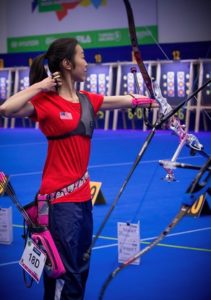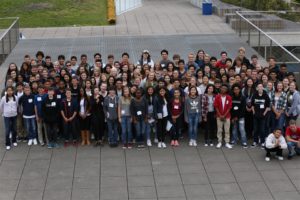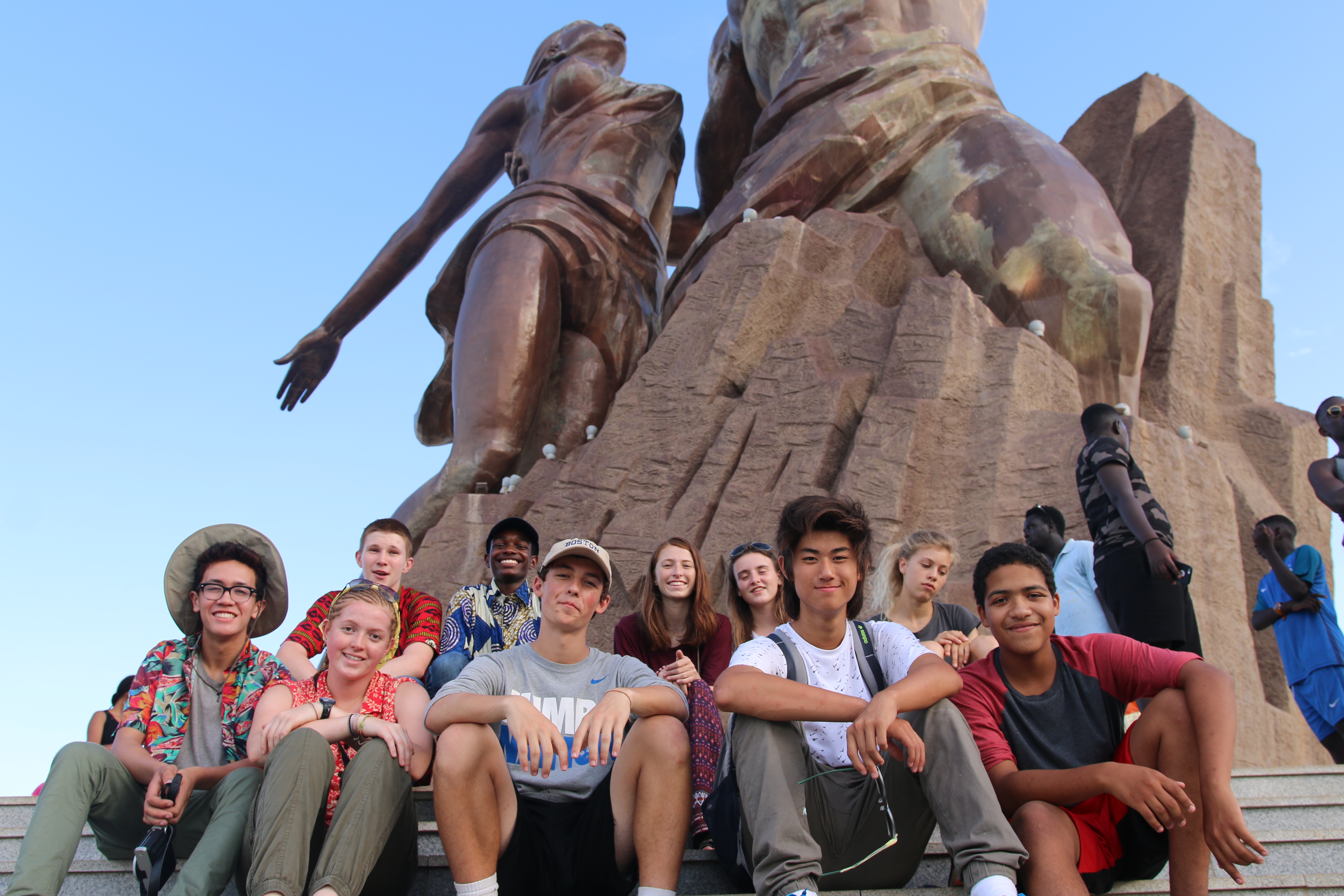
On July 6 2016, 10 students and five trip leaders from Lick-Wilmerding High School boarded a 20 hour Air France flight bound for Dakar, Senegal. Their mission: a three-week service and cultural exchange program in which they would build a school for the beachside village of Niokhob Guedj.
To prepare for the trip, the students spent several weekends taking introduction classes to Wolof, Pular and French. In addition, students in Goranka’s 2015-2016 Architecture 1 class participated in a competition in which they created various designs for Niokhob Guedj’s new school. The designs were examined by the people of Niokhob Guedj, who chose the hexagonal design of Lick students Hudson Matz ‘18 and Jason Woodruff ‘18. Matz was able to participate in the trip and got to witness his and Woodruff’s building become a reality.
A month before the 2016 trip, students going to Senegal designed and built prototypes for the desks and benches that would go in the new school.
6,382 miles and two plane rides later, the 10 eager Lick-Wilmerding students, escorted by Stagecraft teacher Kate Boyd, landed at the Léopold Sédar Senghor International Airport. They would be joined by Lick’s woodshop teacher, Youssou Fall. The Lick group was accompanied by four teachers in training from the Bay Area Teachers Training Institute who would spend the next three weeks living in the village and teaching classes at the local school.
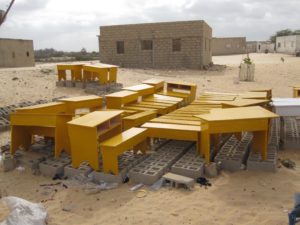
Members of the Lick group loaded onto a bus bound for the Casamara Hotel in the Senegalese capital of Dakar. The next morning, the group met up with Fall on their way to Niokhob Guedj. The students were received by the entire village and enjoyed a full day of Senegalese music, dance and festivities. In the afternoon, the group split up and went with their assigned families where they would have their first experience with the Senegalese language and homelife. At the end of the day, the group met back together and travelled to le Figuier, a hostel a half hour’s drive from Niokhob Guedj that served as their base camp while students worked in the village.
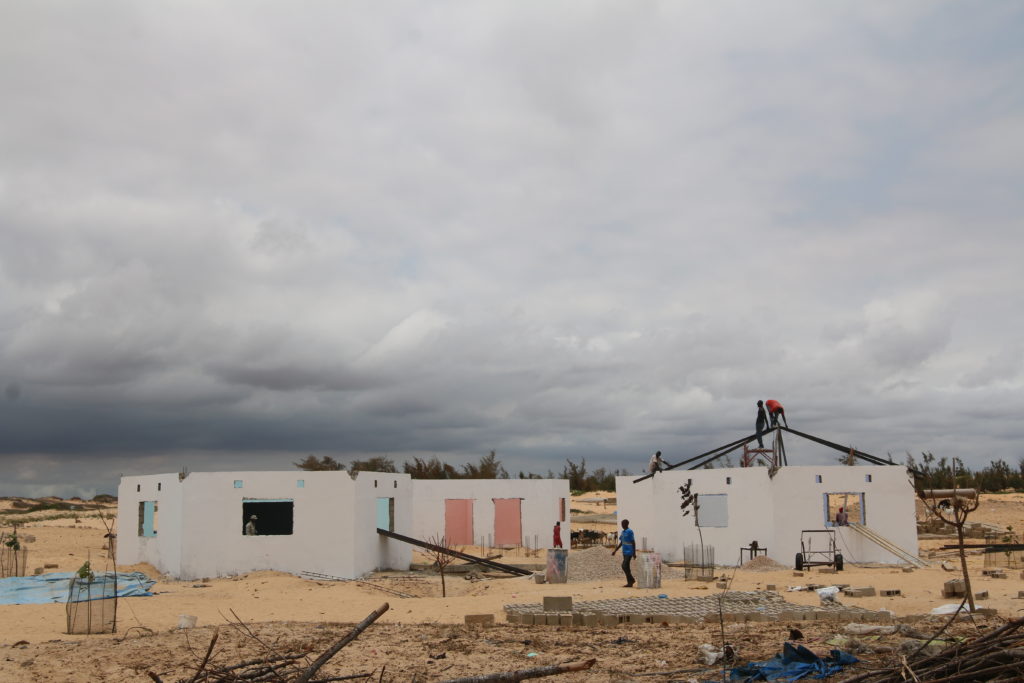
Chloe Lombardo ‘17 describes a typical day in the village, “We got up around 8 for breakfast — which included a baguette, margarine, Nescafe and bissap tea — and then took a half-hour bus ride to the village. After greeting everybody, we met as a group and were assigned roles for the day. To protect against the sun we worked in half hour shifts and then took a 10 minute break.” Students constructed a set of 40 desks and benches and sanded and painted the walls and blackboard of the school.
Each day, some students worked in the village’s medical clinic. Maureen “Mo” Mitchell ‘18 describes the work led by doctor Katarina Cusin, an OB-GYN, “We’d distribute various hygiene products, record patient data and distribute various painkillers, vitamins and other medicines.”
Lick student Saoirse Lewis ‘18 describes a typical lunch, “Around 2 p.m. we were picked up by the youngest member of our family and we took a break from work for lunch, which was the highlight of the day. We’d get to spend almost two hours with our family, enjoying the local dishes — Ceebu Jen, primarily a fish and rice dish served in a large communal bowl and eaten with one’s hands — and drinking the Attaya mint tea.” The time was spent with the adopted families, conversing and enjoying each other’s company. The families were often large — composed of several generations living in the same compound. After family time, students returned to work until 6. If time allowed, they’d either go to the local beach or play a friendly soccer game in the village.
The summer 2016 trip was Lombardo’s second to Senegal with Lick-Wilmerding High School. She describes her desire to go back, “After returning from Senegal after my first trip I looked for ways to change my life, to deepen the relationships I have and to make all the connections in my life more meaningful, like they were in Senegal. I wanted to go back to strengthen those feelings I discovered and to help the people I had learned to love.”
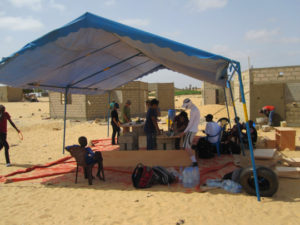
Mitchell and Lewis were struck by the cultural differences between the U.S. and Senegal, especially after arriving back home. “The communal values they have in Senegal center around enjoying each other’s company and relaxing. Everyone is always together. Here we live in a consumer society and life is a lot more busy and structured. The Senegalese people value health and family more than owning things.”
On August 30, 2016, the members of the 2015 and 2016 trips gathered to reflect on their experiences in Senegal after having returned to their normal lives. The students remarked on what they missed about the Senegalese culture, including the warm community and always being together, as well as what they grew to appreciate about their lives at home.
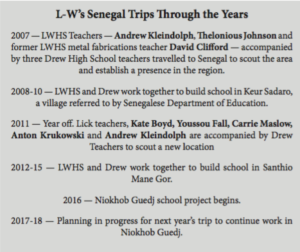
This was the sixth Lick trip to Senegal. This upcoming summer of 2017, Lick students will return to finish the Niokhob Guedj school (the same village students visited on the 2016 trip). The village of Niokhob Guedj was referred to Lick as a possible host for a project by the Senegalese Department of Education. Once the school is finished, the local government will supply the school with teachers, one of whom previously made a 30 kilometer commute to teach at a school in another village.
Lombardo encourages students to apply to go on the trip, revealing that “The Senegal trip is a unique experience. Teenagers are forced to accept the discomfort that comes with outside perspectives, especially from a third world country. It’s powerful not only because it makes you analyze how you’re living your life, but it makes you aware of the reality of the world, which is an amazing thing to learn about.”
For more information regarding the LWHS Senegal trip visit:
Video Recap: https://vimeo.com/179698635
LWHS Senegal Blog: https://www.tumblr.com/blog/licksenegaltrip
Photo Diary on Online Paper Tiger:https://lwhspapertiger.org/2016/09/18/senegal-photo-diary/




